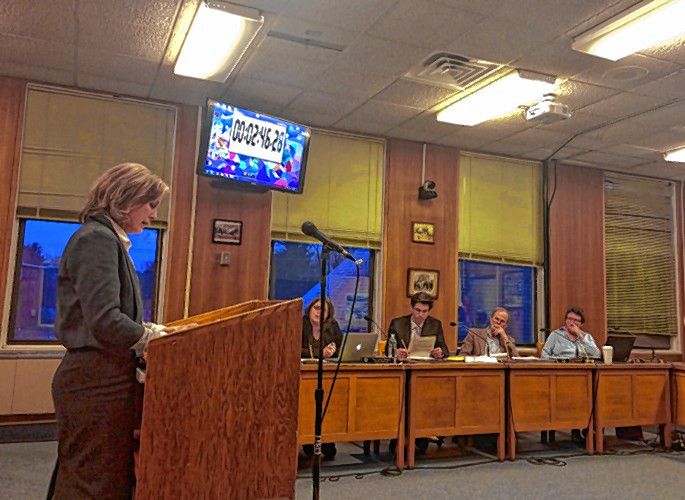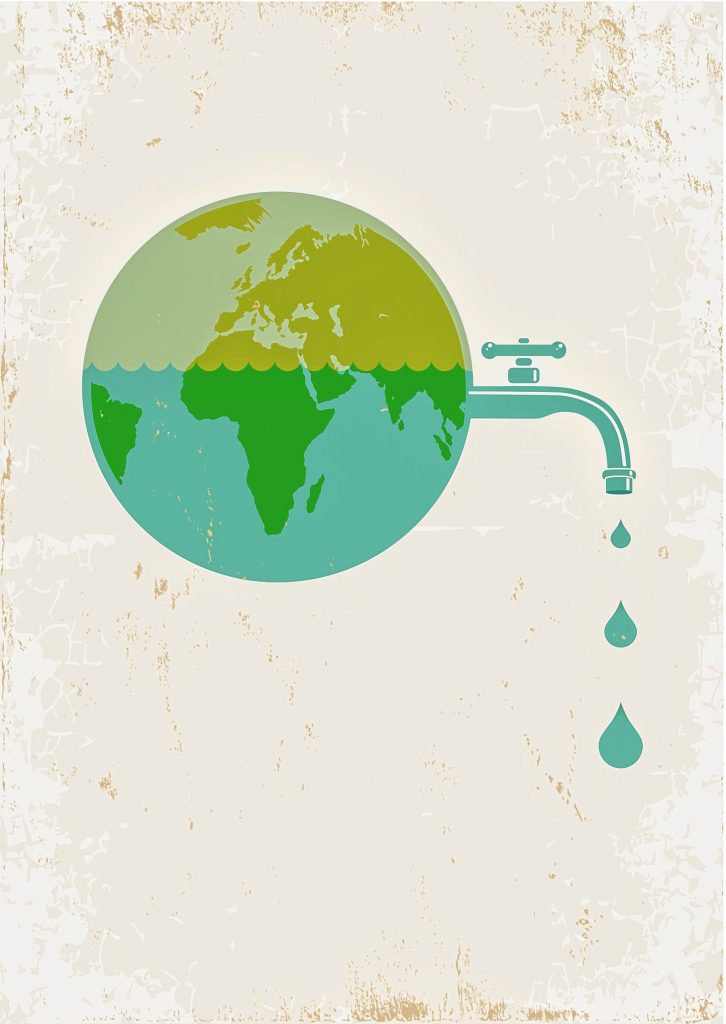It’s one of the things we need most for survival, yet take most for granted. We need it to drink, to cook, to bathe, to brush our teeth.
Water.
We’re blessed to live in a zone of abundant rainfall, and the Mill and Connecticut Rivers pour through the Valley. But even here, clean water isn’t a given. Water for our homes and businesses must be treated, tested, pumped, and disposed of — requiring money and infrastructure.
To help pay for such infrastructure, the Northampton City Council adopted a new, tiered system this April that will charge users of more water — especially medium-sized and large businesses — higher water rates than
small users, who are usually residents.
The move was controversial. Some businesses — including Coca Cola, the city’s biggest user — cried foul.
“We believe the current proposal disproportionately and unfairly impacts our business. Our estimated cost of the proposed rate change is nearly a half million dollars annually, which represents a significant, immediate and unbudgeted increase,” Coca-Cola plant manager David Finister wrote to Mayor David Narkewicz.
The mayor developed the rate plan based on recommendations by a consulting firm retained by the city, and responded to business concerns by slightly decreasing rates from the original proposal.
But Northampton’s updated rate system reflects a new reality nationwide when it comes to vital natural resources like water.
For much of history, humans have taken a “first come, first served” approach toward nature. The first people to lay claim to whatever they found, be it water, or land, or gold in a mine, got to use it as they saw fit.
But the United States is no longer a limitless frontier. Instead, we live in a dense network of interdependent communities, where each person’s use of resources affects their neighbor. Indeed, the great Western writer Wallace Stegner has pointed out that we Americans were never as self-reliant as we made ourselves out to be.
Even the pioneers, Stegner argued, needed the broader local and national community to effectively marshal resources – in the case of water, by funding and building dams, pipes, and treatment systems.
Natural resources that are crucial for survival aren’t infinite, and they need thoughtful collective management. And as many have pointed out, there’s a difference between using a resource like water to drink or bathe or brush your teeth, versus using it to make a profit.
Take Coca Cola as an example. The Coca Cola plant on Industrial Drive is the business most affected by last month’s vote. Its water costs are expected to go up by $76,810 each quarter, an 11% increase.
That increase is noticeable, but is it “disproportionate and unfair?” A look at the numbers helps put things in perspective.
Coca Cola is by far the city’s largest user of water. The bottler gulps one-fourth of the city’s total residential and commercial water each year, according to the mayor’s office. It represents almost a fifth of sewer use.
At the Northampton plant, the water goes into bottles with sugar syrup and flavoring to make 588 million bottles of Coca Cola’s line of flavored water and fruit drinks – including Vitaminwater, Minute Maid, and Powerade. To produce each liter of drink, the manufacturing process needs 2 liters of water, according to the Coca Cola website.
A back of the envelope calculation shows that to make one bottle of beverage, Coke pays Northampton water fees of less than half a cent ($0.0046, to be precise). For a $1.79 bottle of Vitaminwater, consumers pay 400 times the cost of the water Coke bought to make it.
The city’s rate increase, meanwhile, will cost Coke one 100th of a penny more per bottle – including both water and sewer charges.
Coke is an important part of our community. With 290 employees, it is one of Northampton’s 10 largest employers. That’s fewer than the approximately 1,500 people working at each of Cooley Dickinson hospital and Smith College, but about the same as area businesses like Kollmorgen and Stop and Shop.
Coke also contributes to the city’s tax revenue. Last fiscal year, it paid the city about $280,400 in property taxes, alongside about $2.7 million in water and sewer fees. And to the company’s credit, it’s dropped water use in Northampton by 13 percent since 2015.
Still, the tax break of $34,760 over 13 years that Coke is receiving from the city beginning in 2012 means the company contributes less tax than it might. In 2011, the city also contributed $400,000 alongside a $1.125 million state grant for sewer and pumping station upgrades so that Coke could expand its plant.
During the recent hearings on the water plan, the implication hung in the air that rising water rates could prompt businesses to pick up and leave the city. But no business will escape the problem of water by fleeing Northampton — at least not for long.
A study by USA Today found that from 2000 to 2012, water rates doubled in one out of every four municipalities, even tripling in some places.
A big part of the problem is aging infrastructure that needs replacing nationwide. In Northampton, the 40-year-old wastewater treatment plant hasn’t had an upgrade in 20 years. The city also still carries debt on the $28 million water treatment plant built in 2008.
To the east, Boston relied on a 1940’s-era aqueduct made of wood for its water supply from the Quabbin Reservoir until it finally built a large modern pipeline in 2003.
Some areas are in even worse shape. In New York City, two aqueducts supplying 90 percent of the city’s water supply were built before 1945 and never upgraded. The city is now building a new pipeline to the tune of $6 billion, but construction won’t be finished until 2020.
And recently, a 105-year-old water main burst in Springfield, flooding two blocks of Main Street and creating a large sinkhole.
Nationwide, a trillion dollars of investment in water infrastructure is needed over the next 25 years, including repairs and new construction, says the American Water Works Association.
The consequences of ignoring those repairs could be steep – from compromised drinking water quality (witness Flint’s lead crisis) to water main breaks and flooding.
There are better ways to help businesses in Northampton than failing to charge for the real cost of water. For instance, the new Downtown Northampton Association, a city collaboration with local businesses, will plan events and improve the downtown core.
Besides, most users, even businesses, will see only slight rate hikes for water. While empty storefronts in Northampton’s downtown core have prompted concerns that businesses face unaffordable costs, downtown restaurants like Spoleto’s and Sylvester’s will see quarterly water costs rise just $25, while smaller businesses like Florence Pizza will pay a meager $4 more every three months.
Certain businesses, like hotels, will see more significant costs. Hotel Northampton, for instance, will pay $387 more per quarter. But hotels are unusually water-hungry, accounting for 15 percent of all commercial and institutional water use nationwide, according to the EPA. Ideally, the city and such businesses will work together toward improved water efficiency.
Some have expressed concern that, similar to hotels, multi-occupant units like apartment buildings will see unfairly high costs, since water use by many tenants quickly pushes the entire building into a higher rate bracket even if individual tenants conserve.
But that increase should likewise be moderate. To gauge the impact on multi-occupant units, I calculated the increase for my own apartment building, a 5-unit house near downtown Northampton.
Each of the 8 residents in my building uses about 60 gallons of water per day, below the city’s target conservation usage of 65 gallons per person per day. I plugged our usage into the city’s rate calculator and found that although we’ll pay the higher rate on water, our overall costs won’t rise next year due to a slightly decreased rate in sewer fees.
Ultimately, I’ve concluded that the city’s new water rate policy is not only necessary, but also fair. It preserves reasonable costs for the most critical uses – individual drinking and bathing – while asking businesses to contribute a sliver of the profits city water helps them make. And it reflects the underestimated and growing value of a natural treasure – a national patrimony needed by all.
Naila Moreira is a writer and poet who often focuses on science, nature and the environment. She teaches science writing at Smith College and is the writer in residence at Forbes Library. She’s on Twitter @nailamoreira.




